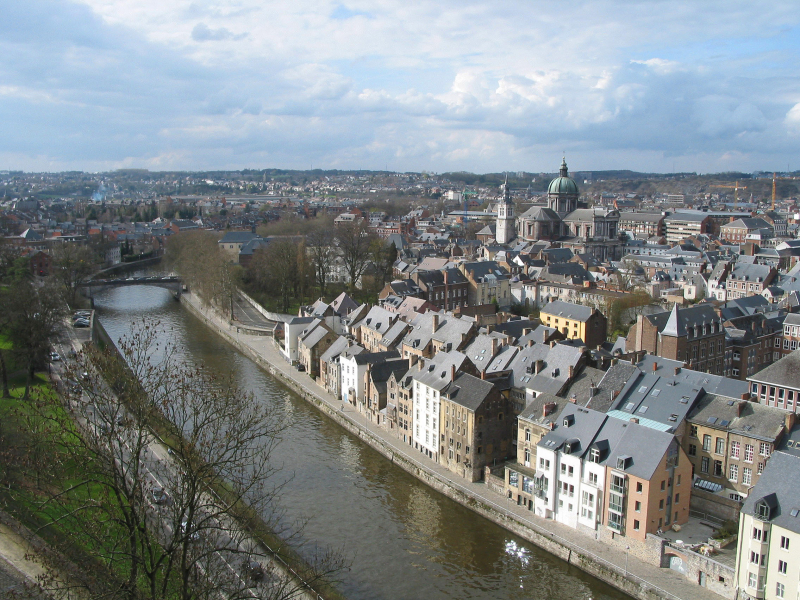Sambre

The Sambre is a river that flows through northern France and Wallonia, Belgium. It is a left-bank tributary of the Meuse, which it joins in Namur, Wallonia.
The Sambre's headwaters are near Le Nouvion-en-Thiérache in the département of Aisne. It runs through the Franco-Belgian coal basin, which was once a major industrial district. The navigable route begins in Landrecies at the Canal de la Sambre à l'Oise, which connects to the central French waterway network (or did, until navigation was interrupted in 2006 following structural failures). It runs 54 kilometers with 9 locks that are 38.50 meters long and 5.20 meters wide down to the Belgian border at Jeumont. The river is canalised in two distinct sections from the border over a distance of 88 km, with 17 locks. The Haute-Sambre is 39 kilometers long and includes ten locks with the same dimensions as those in France, all the way down to the industrial town of Charleroi. In the immediate post-World War II period, the rest of the Belgian Sambre was upgraded to European Class IV dimensions (1350-tonne barges). It is located at the western end of the sillon industriel, which, despite the cessation of all coal mining and the decline of the steel industry, remains Wallonia's industrial backbone. At Namur, Belgium, the river empties into the Meuse.
Voies Navigables de France manages the navigable waterway in France, and the Service Public Wallon - Direction générale opérationnelle de la Mobilité et des Voies hydrauliques manages it in Belgium (Operational Directorate of Mobility and Inland Waterways).
Length: 193 km (120 mi- shared with France)











